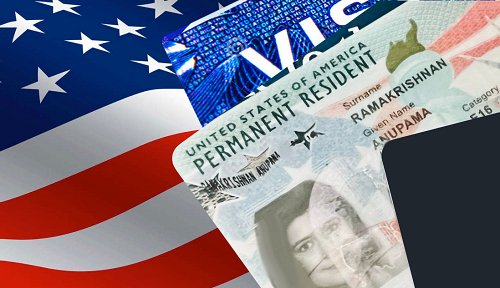The EB1A visa is one of the most sought-after immigration pathways for individuals with extraordinary ability in their field of expertise. Whether in science, arts, business, education, or athletics, the EB1A category is designed for those who have demonstrated achievements recognized nationally or internationally. Yet, despite its advantages—such as bypassing labor certification and faster green card processing—its approval rate is not guaranteed. A crucial factor influencing success is how applicants build and present their professional profile. This raises an important question: Does EB1A profile building truly improve approval rates, or is it just an added layer of preparation?
Understanding the EB1A Visa Criteria
To understand the importance of profile building, it is necessary to revisit what the EB1A visa demands. The U.S. Citizenship and Immigration Services (USCIS) requires applicants to meet at least three of ten criteria or provide evidence of a one-time achievement of major significance, such as a Pulitzer, Oscar, or Olympic Medal.
The ten criteria cover areas such as:
- Published material about the applicant in major media outlets.
- Membership in associations that demand outstanding achievement.
- Evidence of original contributions of major significance.
- Authorship of scholarly articles.
- High salary or remuneration compared to peers.
- Participation as a judge of the work of others, and more.
Given the complexity and high standards, many applicants fail not because they lack merit but because their accomplishments are poorly documented or insufficiently positioned within USCIS’s evaluative framework.
The Role of EB1A Profile Building
This is where EB1A Profile Building comes into play. By strategically curating an applicant’s professional journey, achievements, and recognition, the process helps highlight strengths that align directly with USCIS criteria. For instance, while an applicant might already have multiple international publications, without demonstrating the impact and relevance of these works, they may fall short.
Through EB1A Profile Building, experts work to ensure that achievements are not just listed but are translated into compelling evidence that establishes extraordinary ability in the eyes of adjudicators.
Why EB1A Profile Building Matters for Approval
EB1A petitions face intense scrutiny. Unlike other visa categories, USCIS officers apply a two-part test:
- Do the presented documents meet the required criteria?
- Do they collectively prove extraordinary ability?
Even when applicants meet the minimum three criteria, the second step often leads to denials if the evidence is not persuasive. This is where strategic profile development becomes essential.
According to immigration experts, a strong profile can improve approval rates significantly because it reduces ambiguity. For example:
- Instead of just showing membership in an association, applicants must prove that the membership is exclusive and tied to professional excellence.
- Instead of merely presenting media coverage, experts emphasize coverage in reputed outlets with wide circulation.
Profile building bridges the gap between achievements and how they are interpreted by USCIS officers.
Expert Insights: What Lawyers and Consultants Say
Immigration attorneys often highlight that many denials occur due to weak presentation, not weak credentials. For instance, a researcher with dozens of peer-reviewed articles may face rejection if their impact factor or citation count is not contextualized. Similarly, an entrepreneur with global recognition may be denied if business awards or press mentions are not substantiated with credible documentation.
Profile building addresses these shortcomings by:
- Identifying gaps in achievements early and recommending strategies to strengthen them.
- Structuring documentation in a way that connects each achievement to USCIS criteria.
- Pre-empting officer concerns by including explanatory evidence, letters of support, and third-party validation.
Attorneys confirm that when applicants invest in systematic profile development, the petition not only looks more persuasive but also creates a coherent narrative of extraordinary ability.
Does It Guarantee Approval?
While EB1A profile building significantly improves approval chances, it is important to clarify that it does not guarantee success. USCIS decisions involve subjective judgment, and two officers might interpret evidence differently. However, the process of profile building minimizes risks by ensuring the application is as strong, consistent, and credible as possible.
For example, a case study shared by a leading immigration consultant showed that a software engineer initially received a Request for Evidence (RFE) due to vague documentation of international recognition. After undergoing structured profile building, the resubmitted petition included stronger recommendation letters, detailed media citations, and proof of industry influence. The case was eventually approved, illustrating how better positioning directly impacts outcomes.
Common Mistakes Without Profile Building
Applicants who skip structured preparation often make errors such as:
- Submitting redundant or weak evidence that does not meet USCIS standards.
- Failing to highlight the “why” behind achievements—why they matter globally, not just locally.
- Using generic recommendation letters without emphasizing unique, extraordinary contributions.
- Overlooking opportunities to present evidence of judging, mentorship, or impact metrics.
These mistakes often lead to RFEs or denials, even for highly qualified individuals.
Strategic Advantages of Profile Building
Some of the most impactful benefits include:
1. Stronger Narrative
USCIS officers review thousands of petitions. A profile built with a clear storyline of excellence makes the case memorable and convincing.
2. Proactive Gap Filling
Profile building helps applicants identify areas where evidence is thin and take corrective actions—such as pursuing peer review roles, speaking at conferences, or publishing additional works.
3. Enhanced Credibility
With third-party validation, verified media, and detailed documentation, the application avoids being dismissed as unsubstantiated claims.
4. Reduced Risk of RFE
By anticipating officer concerns, a well-prepared profile decreases the chances of time-consuming and stressful Requests for Evidence.
Conclusion: The Expert Verdict
So, does EB1A profile building really improve approval rates? The answer, according to immigration experts, is yes—substantially. While it cannot guarantee success, it provides applicants with the strategic advantage of presenting their achievements in the strongest possible light.
The EB1A visa is designed for the exceptional few, but many qualified candidates fall short due to weak documentation rather than lack of merit. By investing in profile building, applicants enhance their chances of approval, reduce risks, and create a persuasive narrative that resonates with USCIS officers.





Comments